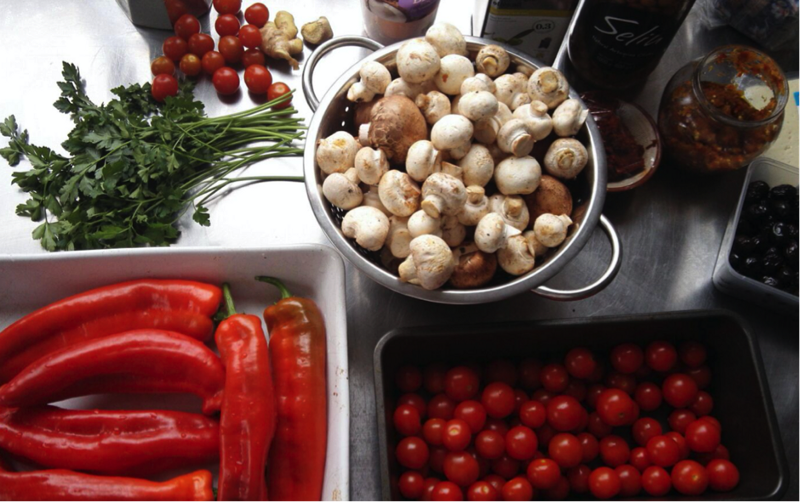Food for thought — recipes for a happy year
- Carmine Pariante

- Feb 23, 2018
- 3 min read
Updated: Mar 21, 2023
You want to be happier in 2019, and new year’s resolutions will not help, so why don’t you try some ‘food for thought’ recipes?
I have written this blog half-jokingly, inspired by my friend, Rachel Kelly, who writes about real food and real recipes. These, however, are spiritual recipes, inspired by my experience as a psychiatrist, or by stories that people have shared with me. Stories of healing and recovery.
And I use these recipes, in one way or another, everyday.

Gratitude smoothie
Gratitude — thankful appreciation for what an individual receives — improves happiness.
Every morning, pour milk into a high-speed blender, and add your most important fruits and vegetables: a roof over your head; food on the table; physical and mental health for you and the people you love; one or more close relationships; and a rewarding job or occupation.
If and when you can find them, put a sprinkle of success, wealth or fame, but don’t let their taste dominate — these ingredients are capricious and disappear quickly.
Blitz until smooth, and drink with joy.
The ‘empty smoothie’ variant
Do you want to feel happier? Focus on what your life would be like without what you have now.
Try this variation, from time to time: just drink the milk, with nothing else.
And focus on how plain life would taste without the fruit and vegetables that nourish you every day.
Social contact salad
Any social contact increases happiness: not only time spent with close friends or a romantic partner, but even just short interactions with strangers in shops and restaurants.
Whisk together the ingredients for a marinade: motivation to go out; time to talk to people; and a large quantity of smiles.
Prepare a face-to-face meeting with a friend, and marinate for 2 hours. This key ingredient cannot be substituted by text messages or by posting on social media. Keep mobile phones out of sight, otherwise they will strip all nutrients.
When your friend is well marinated, grill on both sides. Describe how you are feeling and what has happened to you lately. Invite them to do the same.
Drizzle the salad with a phone call to members of your family.
Serve with a warm heart.

Sadness in friendship wraps with patience mayo
Bereavement, divorce, illness, redundancy, job or money worries — all can affect mental health, at least temporarily.
If your mental health is still severely affected several months after a life event, and you are unable to go to work or to look after yourself and your family, this recipe will not work and you will need help with psychotherapy or antidepressants or both.
But if you are almost managing yet are in the midst of a life-changing crisis, try this recipe. It was given to me at the 2017 Also Festival by a French cook who was listening to my talk on ‘happiness.’
In a bowl, combine mayonnaise, acceptance, patience, and lots of tissues for crying.
Spread the patience mayo all over your best friends. Then tuck in their sides, and roll them up tightly around you, so that they wrap you up completely. Then get all together in the oven.
Let everything negative in your life melt away. The job that is taking a toll on you without giving you any reward. The relationships that no longer work. The living place that you can’t tolerate anymore.
Cook until you are ready to move on. But be patient, and prepare to wait for weeks or months.
Yoghurt for people addicted to dairy
There are many types of addiction: drugs, alcohol, caffeine, sugar, work, stress, bad relationships, social media, fame. Everything that compulsively distracts us from reality can become addictive.
If the addiction has already affected your health, family, relationships or profession, this recipe will not work. And you will not make it by yourself. You will need to seek help.
But perhaps it is not a true addiction yet. If you dip in and out of workaholism, or at times you drink too much, when life feels too difficult or too boring, then try this recipe.
Start by recognizing that your dairy addiction is a problem. Every time you have some dairy product, you initially feel better, but then it leaves you worse off, nauseated, and empty. This means that you need some dairy-free yoghurt.
You start by choosing a non-dairy milk. Mindfulness, spirituality or physical exercise works best.
You then add a thickening agent, to make the yoghurt thick enough to fill the void inside you.
One or two important relationships, and a few true friends, will give you the thickness that you need.
And then add emotions, as they are the best probiotics. Happiness, sadness, fear, surprise, trust, anger. Experience your emotions full-on, without fear. And listen with empathy to people around you, and feel their emotions.








